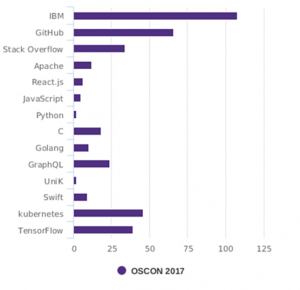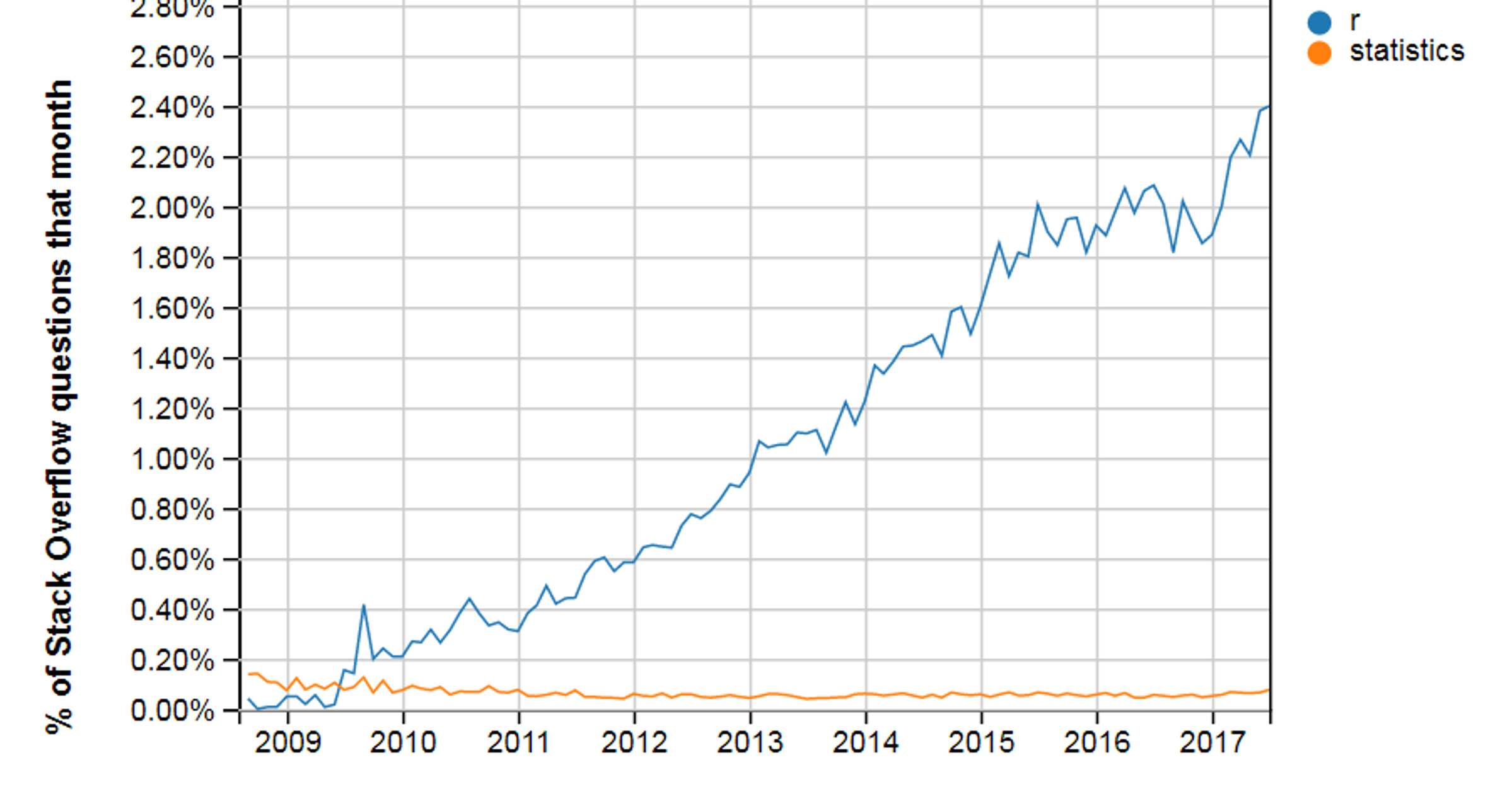This week we're at OSCON in Austin as part of our efforts to support the open source community. While we're here, we thought we'd compare what's trending on social media versus what we can see through our new Stack Overflow Trends tool. We launched Trends this week so developers could see how technologies have grown or shrunk over time. The top terms on social yesterday included a combination of companies and tech, with Kubernetes and TensorFlow leading the pack for the latter group. Here's a short list of some of the top terms:

Early in the day, we presented how Docker and Kubernetes were tracking since we've seen buzz about both at OSCON. https://twitter.com/StackOverflow/status/862335218665041921 But more impressive is the explosion in popularity of TypeScript, a superset of JavaScript that we use internally at Stack Overflow. https://twitter.com/StackOverflow/status/862351729345519616 Another interesting trend we noticed yesterday was the expansion of several data science technologies, especially the fast-growing open-source TensorFlow library, which recently caught up with the MATLAB language in questions asked per month. https://twitter.com/StackOverflow/status/862359206032224258 Yesterday at Microsoft's Build conference (it's a busy week for tech events), the company announced an Azure database for MySQL and PostgresSQL. Unsurprisingly, MySQL is still popular, although its growth may have stalled or even started shrinking. https://twitter.com/StackOverflow/status/862403485337178112 With all the work we've done to launch Stack Overflow Trends, we were pretty pleased that O’Reilly Media (producers of OSCON) founder and CEO Tim O’Reilly gave us a shout out. (Thanks, Tim.) https://twitter.com/timoreilly/status/862429784646631425 He later asked us how competing cloud technologies have been growing on the platform. Short story: https://twitter.com/StackOverflow/status/862655997394989056 Tim also pointed out that we should include some context for the analysis and how the Stack Overflow community might differ from the overall programmer population. https://twitter.com/timoreilly/status/862441179677302784 That's an important question that we often think about and will share more about in the future. Though in regards to this specific example, since Stack Overflow runs on .NET and its founders were well known for their Microsoft-related blogging, the community was originally shifted towards Microsoft developers. But that appears to have change over time, with Microsoft technologies shrinking as a share of questions. https://twitter.com/StackOverflow/status/862657318093299712 [Update to the above] https://twitter.com/StackOverflow/status/862703078935580672 We'll be back with more analysis on Twitter today and tomorrow. Don’t see your favorite language, technology, or framework in this post? Use the Stack Overflow Trends tool to create your own graphs, and see what you can learn about how the developer ecosystem is changing and where it might be going in the future. Are you looking for work using the languages, technologies, or frameworks discussed? Check out our listings for Javascript jobs, MySQL jobs, R jobs and more on Stack Overflow Jobs.
